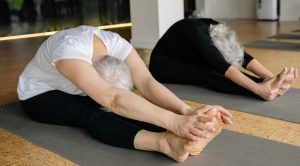Mastering Mobility: The Overlooked Pillar of Long-Term Fitness Health
Mobility is one of the most essential elements of physical health, yet it is often overshadowed by strength training or cardio workouts. While lifting weights builds power and endurance builds stamina, mobility determines how freely, safely, and efficiently your body can move. When mobility is strong, every movement feels smoother, posture improves, and your risk of injury drops significantly. When mobility is limited, even simple activities like bending, lifting, or walking can become strained.
Mobility supports balance, coordination, range of motion, and joint health. It is the foundation that makes training sustainable and daily life more comfortable. In modern society, long hours of sitting reduce mobility in key areas such as the hips, spine, shoulders, and ankles. Working to improve these areas brings long-term benefits that influence every part of your fitness journey.
Understanding the Role of Mobility
Mobility refers to the ability of a joint to move through its full range with control and stability. Many people confuse mobility with flexibility, but they are not the same. Flexibility is passive muscle lengthening. Mobility is active control throughout a motion.
Having mobility means your body can move freely while maintaining coordination and strength. According to the National Academy of Sports Medicine, improving mobility helps reduce injuries, enhance performance, and support long-lasting joint health. When mobility is strong, movement becomes effortless and fluid.
Why Mobility Is Essential for Daily Life
Mobility affects everything you do. Whether you are climbing stairs, lifting groceries, exercising at the gym, or simply sitting at your desk, mobility determines how your joints respond. Poor mobility forces the body to compensate, which often leads to discomfort or strain over time.
Strong mobility supports:
Better posture
Softer, more fluid movement
Lower joint stress
Improved coordination
Smoother squatting and bending
Greater balance and stability
Confidence in daily tasks
When mobility is prioritized, daily life becomes easier. You feel lighter, more aligned, and more capable of physical tasks that require strength or endurance.
The Science Behind Healthy Mobility
Mobility involves several systems working together. The joints must glide smoothly, the muscles must lengthen and contract properly, and the nervous system must allow movement without unnecessary restriction. Mobility exercises stimulate synovial fluid inside the joints, which lubricates and nourishes cartilage.
They also improve blood flow, sending oxygen and nutrients to muscles that need recovery. Over time, mobility work improves the communication between the brain and the body, resulting in better movement patterns and smoother motor control.
This is why mobility training benefits athletes, beginners, active individuals, and anyone recovering from stiffness.
Areas Where Mobility Often Declines
Most people experience limited mobility in predictable zones due to lifestyle habits. These include:
Hips, which tighten from sitting
Thoracic spine, which stiffens from poor posture
Shoulders, which lose range from hunching forward
Ankles, which become restricted due to lack of natural movement
Hamstrings and calves, which shorten over time
Targeting these areas improves total body mobility and makes physical activity more enjoyable.
Benefits of Strong Mobility
The benefits of training mobility regularly are extensive. They include:
1. Less stiffness and pain
Improved mobility reduces tension in the back, neck, and hips.
2. Better performance
A mobile body moves through exercises with better form and control.
3. Faster recovery
Mobility boosts circulation, speeding up healing after workouts.
4. Lower injury risk
Good mobility protects joints from excessive pressure.
5. Increased comfort in daily activities
Walking, bending, stretching, and reaching become easier.
6. Improved breathing
A mobile rib cage and spine enhance respiratory function.
Mobility is genuinely the hidden advantage behind long-term fitness success.
How to Build a Mobility Practice
Mobility training does not require long sessions or professional equipment. It only requires consistency. Ten minutes a day can make a noticeable difference.
A strong mobility routine includes:
Joint rotations
Dynamic movements
Light stretching
Controlled articular rotations
Hip and shoulder openers
Spinal twists
Ankle mobility drills
These exercises encourage full motion, muscle balance, and better alignment.
Mobility and Strength Training
Mobility and strength work beautifully together. Without mobility, strength becomes limited and unsafe. With mobility, your muscles can work at their full potential.
Strong mobility helps you:
Achieve deeper squats
Maintain better form in lifts
Activate muscles more effectively
Reduce compensations
Move confidently during training
Mobility is the partner that strength cannot function well without.
Mobility and Injury Prevention
Many injuries occur because a joint cannot move properly. If your ankle lacks mobility, your knee takes extra stress. If your hip is stiff, your lower back compensates.
By improving mobility, you protect your joints from overload and strain. This allows your body to move naturally, reducing the chance of sprains, pulls, or chronic discomfort.
Mobility is one of the greatest long-term investments in injury prevention.
Mobility for Aging and Longevity
Mobility becomes even more important as you age. Maintaining it helps preserve independence, confidence, and physical capabilities. Studies show that older adults who prioritize mobility experience fewer falls, better balance, and greater overall comfort.
Mobility also supports joint health by keeping the cartilage nourished and active. A routine focused on mobility promotes a long, active, and capable life.
Daily Mobility Routine Example
Here is a simple and effective daily routine:
Neck circles
Arm swings
Hip circles
Cat cow
Deep squat sit
Ankle rolls
Thoracic spine rotation
Glute bridge
This routine improves overall mobility in under fifteen minutes and can be done anywhere.
Mobility and Mental Wellbeing
Mobility practice offers a surprising emotional benefit. Slow, controlled movement calms the nervous system and reduces stress. It encourages body awareness, mindfulness, and a sense of grounding.
Breathing deeply while practicing mobility connects the mind and body, creating clarity and emotional balance.
Mobility becomes a moment of relaxation as much as it is a moment of physical improvement.
Myths About Mobility
Myth 1: Only flexible people need mobility
Mobility is for everyone. It builds capability, not just flexibility.
Myth 2: It takes too long
A short, consistent routine brings strong results.
Myth 3: Strength training eliminates the need for mobility
Strength without mobility increases injury risk.
Myth 4: Mobility is only stretching
Mobility is active training that builds control.
Conclusion: Mobility Creates Freedom
Mobility is the quiet foundation of long-term fitness. It allows you to move freely, safely, and confidently throughout life. With mobility, strength grows, endurance improves, and training becomes enjoyable. Without mobility, progress slows and discomfort increases.
To explore more fitness and wellness practices, visit BodyWellnessGroup.com.
For deeper scientific insights on mobility and training principles, visit National Academy of Sports Medicine.
If you are ready to begin your own mobility journey, start here: Moviefil
Mobility is not only movement. It is freedom, health, and the key to a strong future.
Wellness Made Simple

Breathwork Basics You Can Use Anytime To Reset
Breathwork Basics You Can Use Anytime To Reset

Sleep Rhythm, Simple Night Habits For Deeper Rest
Sleep Rhythm, Simple Night Habits For Deeper Rest

The Meaning of Connection: Building a Purposeful and Fulfilling Lifestyle
Explore how genuine connection supports mental wellbeing, emotional health, and deeper purpose, shaping a more meaningful and fulfilling lifestyle.

Hydration Balance: How Water Shapes Energy, Digestion, and Daily Wellness
Learn how hydration balance fuels energy, supports digestion, and improves overall wellbeing through simple daily habits and smart nutrition strategies.

The Power of Grounding: Returning to Inner Stability in a Distracted World
Discover how grounding techniques calm the mind, reduce stress, and restore emotional stability in a fast paced, distraction filled world.

Mastering Mobility: The Overlooked Pillar of Long-Term Fitness Health
Discover why mobility is essential for strength, performance, and injury prevention, and learn how daily movement habits build a healthier, more resilient body.

The Meaning of Connection: Building a Purposeful and Fulfilling Lifestyle
Explore how genuine connection supports mental wellbeing, emotional health, and deeper purpose, shaping a more meaningful and fulfilling lifestyle.

The Power of Antioxidants: Defending Your Body from Within
Learn how antioxidants protect your cells, strengthen immunity, and support long-lasting vitality through simple, nutritious food choices.

Expanding Awareness: The Key to Emotional and Mental Freedom
Discover how cultivating awareness deepens emotional balance, clarity, and self-understanding, helping you live consciously every day.

The Power of Recovery: How Rest Shapes Long-Term Fitness Success
Discover why recovery is essential to performance, strength, and endurance, and learn how rest builds a foundation for sustainable fitness progress.













